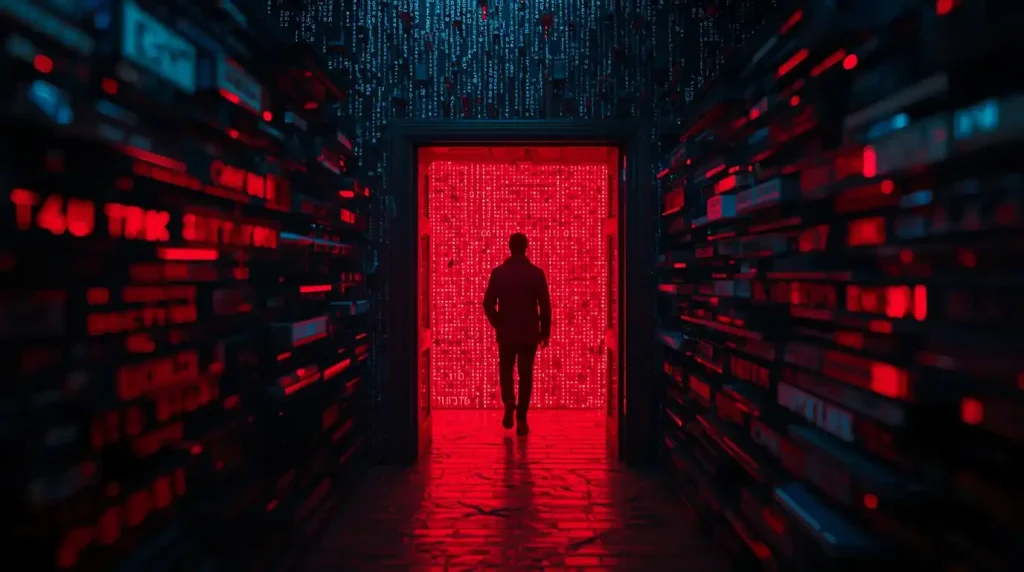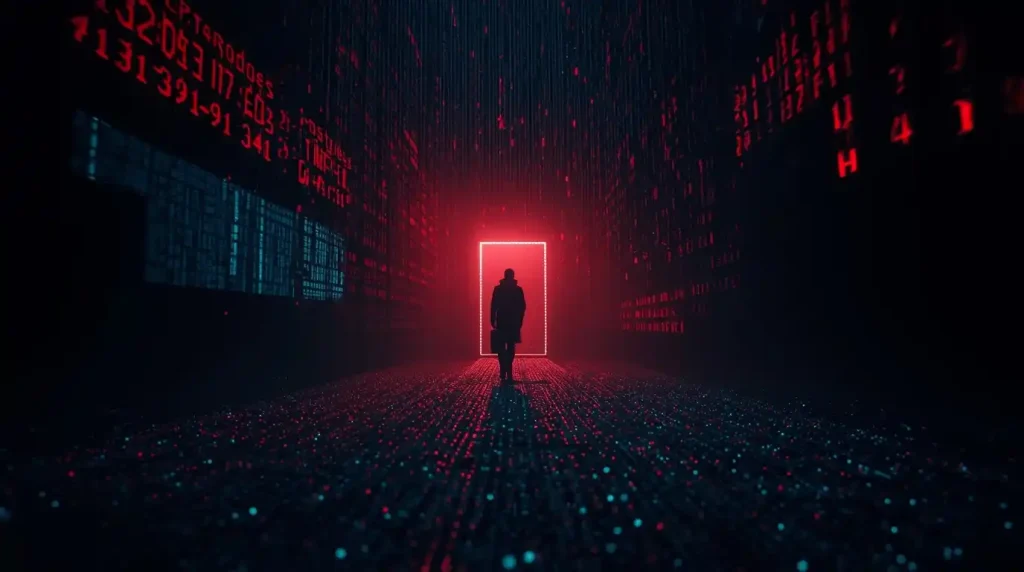Silent Courier: How MI6’s Dark Web Portal is Revolutionizing Espionage
The world of spies has always been shrouded in shadow, a place of dead drops, coded messages, and whispered conversations in foggy London alleys. It’s a world that belongs to a bygone era of trench coats and briefcases handcuffed to wrists. But in a stunning move that catapults espionage into the 21st century, the UK’s Secret Intelligence Service, MI6, has thrown open a digital door to the secret world.
They’ve launched a dark web portal, dubbed the “Silent Courier,” designed to recruit spies from right under the noses of hostile foreign governments. This isn’t just a new tool; it’s a fundamental paradigm shift in how intelligence agencies think about talent, trust, and technology. It’s a daring, high-stakes gamble that blends cutting-edge tech with the timeless art of human intelligence, and it could change the game of global espionage forever.
Dark Web – The Genius Behind the Move: Why the Dark Web is the Perfect Hunting Ground
To understand why MI6’s strategy is so brilliant, you must first understand the landscape of the modern authoritarian state. In countries like Russia, China, Iran, and North Korea, the internet is a heavily patrolled space. Every click on a foreign news site, every search for dissident content, every email sent to a suspicious address can be logged, analyzed, and used to flag a person for scrutiny by state security services. The traditional method of an MI6 officer making face-to-face contact in a third country is incredibly risky, both for the officer and the potential asset.
The moment of first contact is the moment of greatest peril. The dark web, a part of the internet inaccessible to standard browsers and requiring specific software like Tor to access, completely rewrites these rules. It offers a level of anonymity that is unprecedented. A potential informant, sitting in Moscow or Beijing, can now access MI6’s portal without their internet service provider or government surveillance apparatus knowing what they are doing or where they are going.

The initial approach, the most dangerous step, is now initiated by the asset from the safety of their own anonymity. MI6 isn’t just meeting spies where they are; it’s meeting them in the only place they can truly be safe to even think about becoming a spy.
This move signals a profound understanding of modern digital paranoia.
It demonstrates that MI6 knows its target audience isn’t browsing LinkedIn; they are living in a digital panopticon. By choosing the dark web, MI6 isn’t just using a new technology; it is speaking the language of the disaffected, the cautious, and the vulnerable within these regimes. It says, “We understand your reality, and we have built a bridge from that reality to ours, on your terms.”
Dark Web – 5 Reasons This Strategy is a Masterstroke of Modern Espionage
- Unprecedented Anonymity and Safety for Potential Assets: The core benefit is the protection of the individual. A person with access to sensitive information who is disillusioned with their government can now seek contact without the immediate fear of discovery. The Tor network bounces their connection through multiple relays around the world, making it nearly impossible to trace the origin. This reduces the psychological barrier to initiation dramatically.
- Direct Access to a Targeted, High-Value Audience: The very act of seeking out and navigating to a dark web recruitment portal is a powerful self-selecting filter. It immediately identifies individuals who are not only tech-savvy and aware of tools to circumvent censorship but are also motivated enough to take a proactive, albeit anonymous, step. MI6 isn’t casting a wide net in the open ocean; it’s dropping a precise line in a pond known to contain specific, valuable fish.
- A Devastating Blow to Foreign Counter-Intelligence: The security services of adversarial nations are masters of disruption. They monitor their officials, they run surveillance, and they look for the tell-tale signs of personal contact with foreign intelligence officers. The “Silent Courier” portal completely bypasses these traditional counter-intelligence measures. There is no physical meeting to surveil, no suspicious foreign national to flag, and no unusual travel patterns to detect. The first a counter-intelligence agency might know of a leak is when the information is already in MI6’s hands.
- Building a 21st-Century Brand of Trust: Espionage is, at its heart, built on trust. The “Silent Courier” portal is meticulously designed to build that trust from the first click. It reportedly features cryptographic checksums to verify the site is genuine and not a honeypot set up by a hostile power. It offers a secure, encrypted channel for two-way communication, allowing a potential asset to ask questions and receive answers, building a relationship before a single piece of information is ever exchanged. This digital handshake is the new version of a safe-house meeting.
- Scalability and Constant Availability: A human intelligence officer can only be in one place at a time. They need to sleep, travel, and maintain their cover. The dark web portal, however, is open for business 24 hours a day, 7 days a week, 365 days a year. It can handle an infinite number of inquiries simultaneously, from every corner of the globe. This allows MI6 to scale its recruitment efforts in a way that was physically impossible before, creating a constant, global presence.
Dark Web – The “Silent Courier” Experience: A Step-by-Step Journey into the Shadows
So, what does it actually feel like for a potential recruit? The journey begins with the download of the Tor browser, a act that itself is a small step into the clandestine world. Typing in the complex .onion address is a point of no return. They are met with a minimalist, professional interface—a far cry from the cliché-ridden world of movie espionage. This is a serious platform for serious people.
The site likely features a secure upload function for documents, a encrypted messaging system for dialogue, and detailed instructions on how to maintain operational security (OPSEC) to avoid detection. The entire experience is designed to be intuitive yet supremely secure, reassuring the user that they are in the hands of professionals who prioritize their safety above all else. It’s a digital version of the famously meticulous Britishness of MI6—orderly, reliable, and discreet, just in a revolutionary new package.

The Inevitable Risks: Navigating a Digital Minefield
For all its genius, the “Silent Courier” initiative is not without significant perils. The dark web is a lawless domain, and MI6 does not have a monopoly on it. The most glaring risk is the potential for a hostile honeypot. A foreign intelligence service could discover the portal’s address and create a mirror site designed to mimic it. They could then attempt to identify and entrap individuals who try to access the legitimate site, or use the mirror to feed false information to MI6, creating a nightmare of disinformation. There is also the risk of technological hubris. Over-reliance on the anonymity of the Tor network could be catastrophic if a fundamental vulnerability were ever discovered and exploited.
Furthermore, the human element remains the weakest link. A potential asset could make a simple OPSEC error—like accessing the portal from a work computer or forgetting to use a VPN—that leads right back to their doorstep. Finally, there’s the ethical and political minefield. What happens if a hostile state claims the portal is proof of Western aggression and uses it to justify further cracking down on their own citizens or launching cyber-attacks in retaliation? The digital battle space is complex and fraught with unintended consequences.
The Human Element: Why Spies Still Matter in an Age of AI
In an era dominated by signals intelligence (SIGINT), satellites, and AI-powered data analysis, some have questioned the value of old-fashioned human intelligence (HUMINT). MI6’s massive investment in the “Silent Courier” portal is a powerful statement that humans are more important than ever. A satellite can show a missile launcher, but it can’t tell you the political infighting behind its deployment. AI can analyze vast quantities of data, but it can’t get a copy of the secret speech a dictator gave to his inner circle.
A hacked email server can provide information, but it can’t convey the intention, the fear, or the ambition in the room when a decision was made. The human spy provides context, intention, and insight that no machine can ever replicate. They are the ultimate source of wisdom in a world drowning in data. This portal isn’t a replacement for spies; it’s a powerful new engine to find them, protecting them from the moment of their first courageous thought to betray their regime.

The Future of Spying: A Global Digital Arms Race
MI6’s innovation will not go unanswered. It is almost certain that other major intelligence agencies—the CIA, Mossad, Russia’s SVR, China’s MSS—are either already operating similar portals or are now scrambling to develop their own. The dark web is set to become the new front line in the spy wars, a digital battlefield where agencies will compete for the hearts and minds of the world’s most well-informed dissidents. We can anticipate a future of digital counter-measures:
AI bots patrolling the dark web to find and disrupt these recruitment sites, increasingly sophisticated honeypots, and complex cyber-attacks aimed at taking them offline. The “Silent Courier” is the first major shot in this new war, a declaration that the future of espionage will be written not in secret ink, but in lines of code, encrypted packets, and the anonymous digital courage of those who dare to step out of the darkness and make contact.

Table of Contents
Reference Website:
https://edition.cnn.com/2025/09/18/europe/mi6-silent-courier-dark-web-spies-intelligence-intl
Our Related News Website:
Sports: Sport Flash
World News: The News Grid
Environment News: Eco Alert
Business News: Biz Trend Now
Dailt News: Unbiased Daily
Realm News: Real Time Realm
Retrun to our Homepage